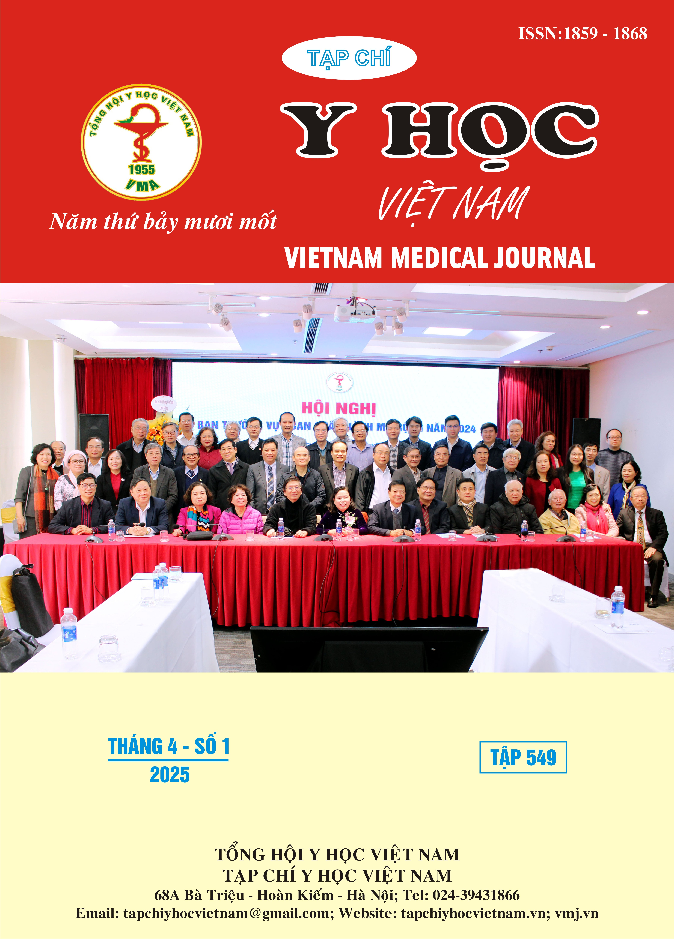RELATIONSHIP BETWEEN YAKES CLASSIFICATION AND TREATMENT RESPONSE TO ABSOLUTE ETHANOL EMBOLIZATION IN PERIPHERAL ARTERIOVENOUS MALFORMATIONS AT CHO RAY HOSPITAL
Main Article Content
Abstract
Background: Peripheral arteriovenous malformations (AVMs) are complex vascular disorders with various classification systems guiding treatment approaches. The Yakes classification is widely used to evaluate anatomical and hemodynamic characteristics of AVMs, supporting appropriate intervention strategies. However, the relationship between Yakes classification and treatment response to absolute ethanol embolization (AEE) has not been adequately studied in Vietnam. Objective: To evaluate the relationship between Yakes classification and treatment response to absolute ethanol embolization in peripheral AVMs. Methods: A retrospective case series study was conducted at Cho Ray Hospital from May 2019 to October 2022. Patients were classified according to Yakes classification and treatment outcomes were assessed based on clinical and imaging criteria. Results: The study included 39 patients with peripheral arteriovenous malformations classified according to the Yakes system. The overall success rate of absolute ethanol embolization was 74.4% (29/39 patients). Yakes IIIa group had the highest success rate (86.7%), followed by group IIIb (75%) and group II (61.1%). Yakes IV group had a 100% success rate, however, the number of cases in this group was very small (n=2). Conclusion: Yakes classification has a close relationship with the response to absolute ethanol embolization treatment. Group IIIa had the highest success rate, while group II had the lowest success rate. This helps clinicians predict treatment outcomes and choose appropriate strategies.
Article Details
Keywords
Arteriovenous malformation, Yakes classification, absolute ethanol embolization, endovascular intervention
References
2. Fan C, Zhang Y, Ding X. Outcomes of surgical treatment for peripheral arteriovenous malformations in upper extremities. J Vasc Surg. 2019;69(5):1482-1490.
3. Legiehn GM, Heran MK. Venous malformations: classification, development, diagnosis, and interventional radiologic management. Radiol Clin North Am. 2018;46(3):545-597.
4. Yakes WF, Baumgartner I. Interventional treatment of arterio-venous malformations. Gefasschirurgie. 2014;19(4):325-330.
5. Bouwman FC, Schröder LM, Bink A, et al. Ethanol sclerotherapy of peripheral arteriovenous malformations: evaluation of systemic ethanol contamination. J Vasc Interv Radiol. 2020;31(4): 586-594.
6. Wang YA, Sun ZH, Xu WL, et al. Effects of different embolization techniques on efficacy and safety for high-flow arteriovenous malformations of the mandible. Int J Oral Maxillofac Surg. 2017;46(11):1429-1434.
7. Yakes WF, Yakes AM, Rohlffs F, et al. Yakes Classification: A system for stratifying endovascular treatment of vascular malformations. Vascular. 2015;23(3):e31–e37.
8. Griauzde J, Wilseck JM, Chaudhary N, et al. Arteriovenous malformations of the face: outcomes of endovascular therapy. AJNR Am J Neuroradiol. 2020;41(12):2250-2255.


